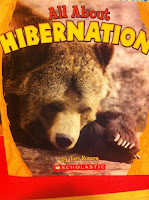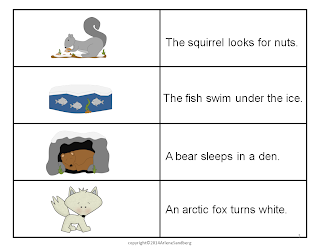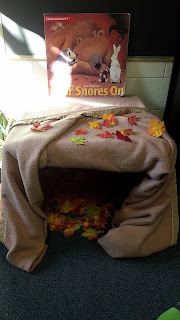Hibernation, Migration, and Adaptation
Animals in Winter
When the weather gets cold, the animals start to prepare for winter!
In the fall, some animals start to change their behavior to get ready for the colder months.
Some animals will eat and eat and get fat and plump so they will be ready
to sleep through the winter (HIBERNATION). These animals will go through changes
during their hibernation - their heart rates slow, their body temperatures lower, and they rest.
We named animals that hibernate such as: bears, skunks, chipmunks, snakes, hedgehogs, etc
Other animals begin to move south to warmer areas where there is more food (MIGRATION).
We learned Canadian Geese travel in groups, forming a "V" shape so that they stay together, travel safely, and take turns leading the group. They will stop to eat and rest along their journey
and will return to their summer homes after winter is over.
We also learned some whales migrate from Alaska to Mexico.

And lastly, some animal's bodies and behaviors change - their fur thickens, the prepare winter beds and dens, and they store or bury food for their winter. Some animals that adapt for winter
include: squirrels, deer, bunnies, fox, even my own cats! We talked about
many ways they adapt and how it helps them survive.

In Centers, we had our very own bear cave, an arctic center with penguins and whales and polar bears, a STEM activity where the children had to try to balance cups into a shape of a tree or a square, and other winter related centers.
Suggested Reading:

And many others...Also, one we don't have but I'd love to find...






























































No comments:
Post a Comment
Note: Only a member of this blog may post a comment.